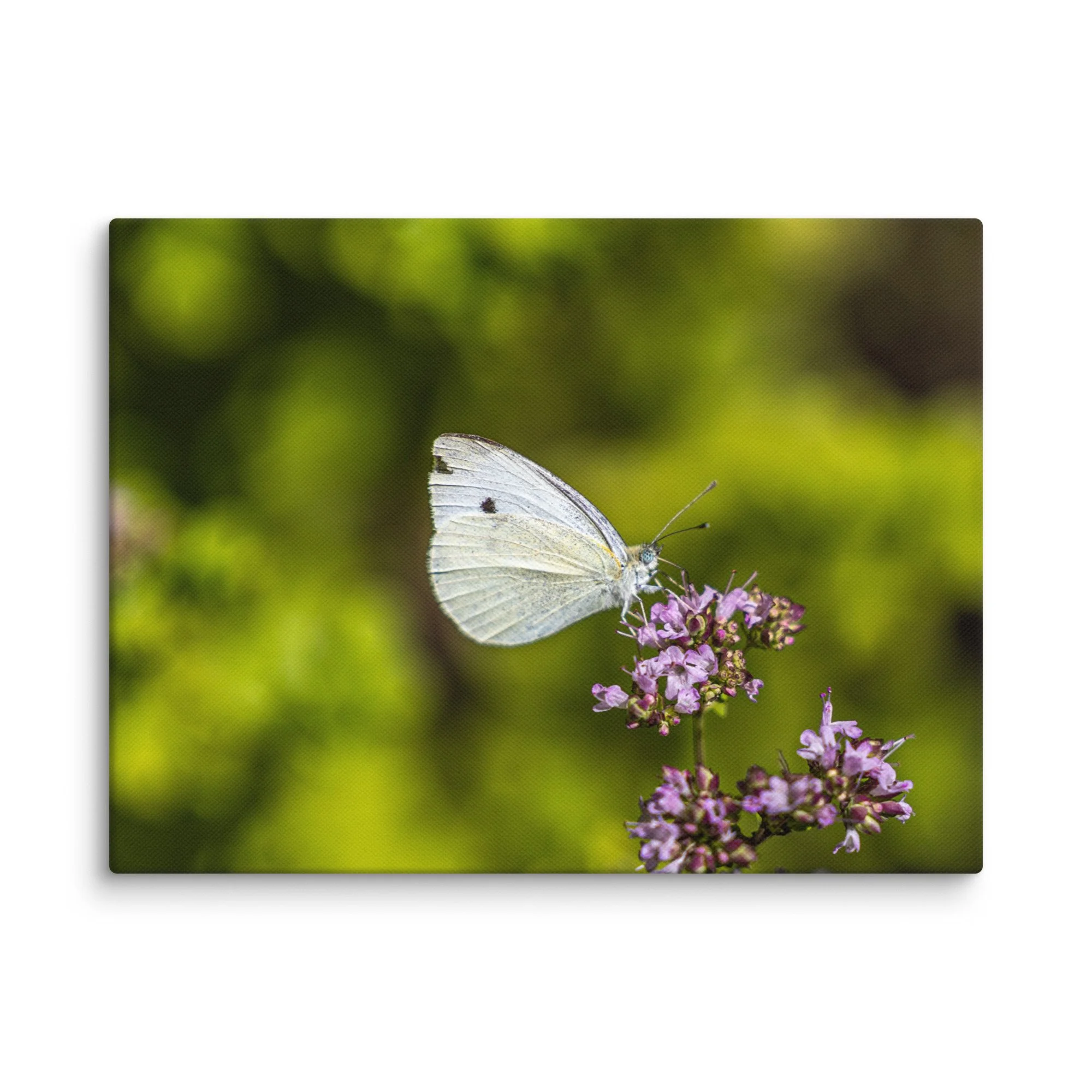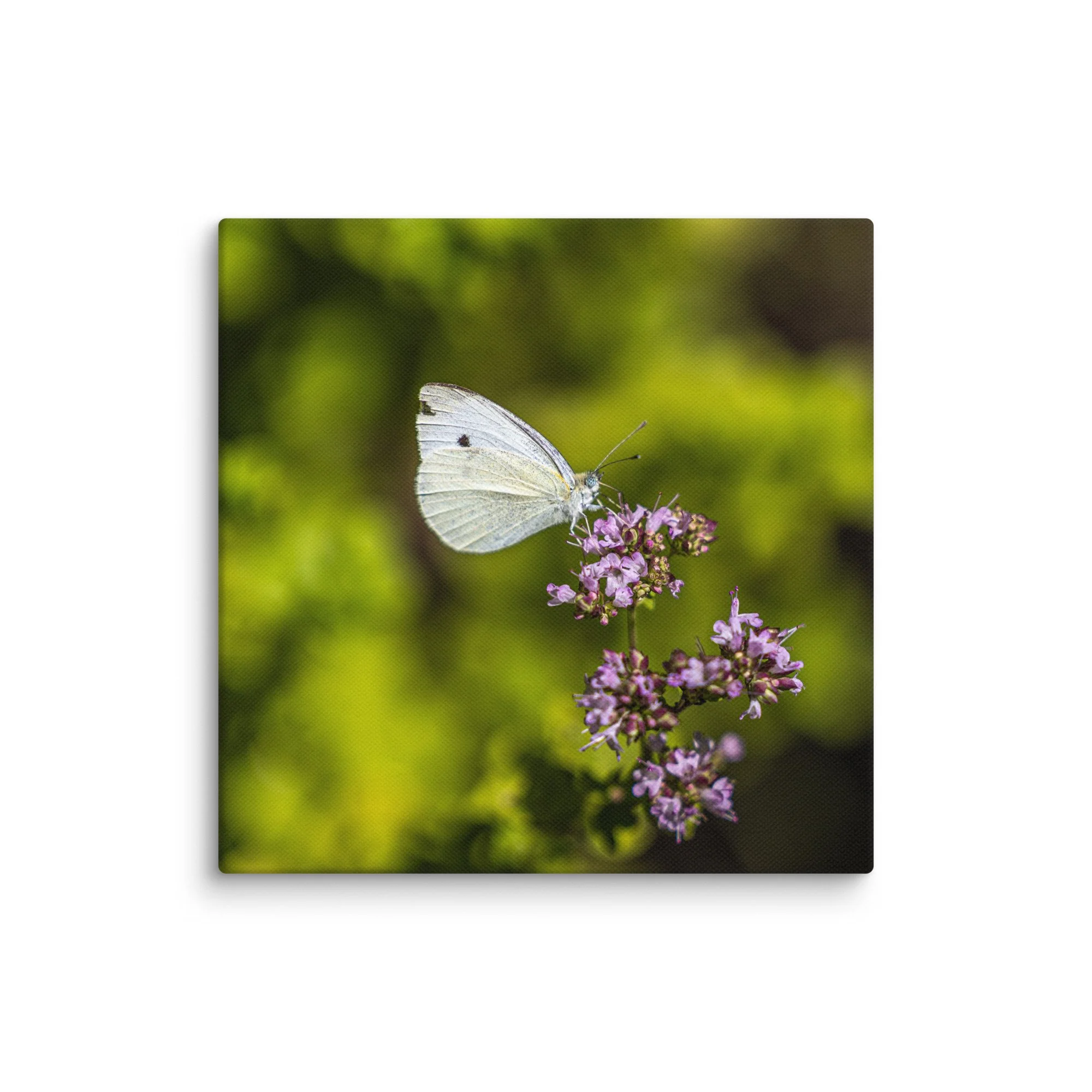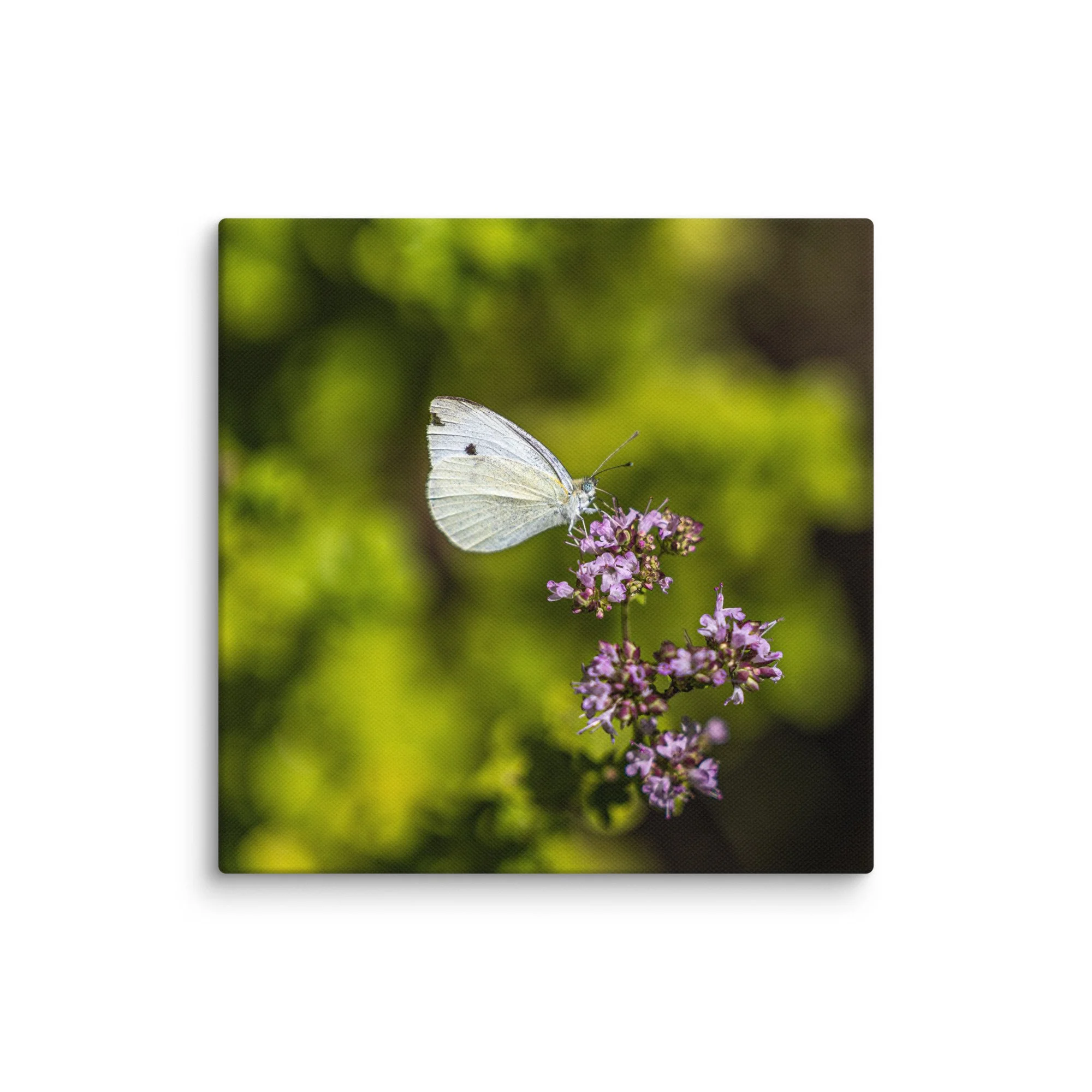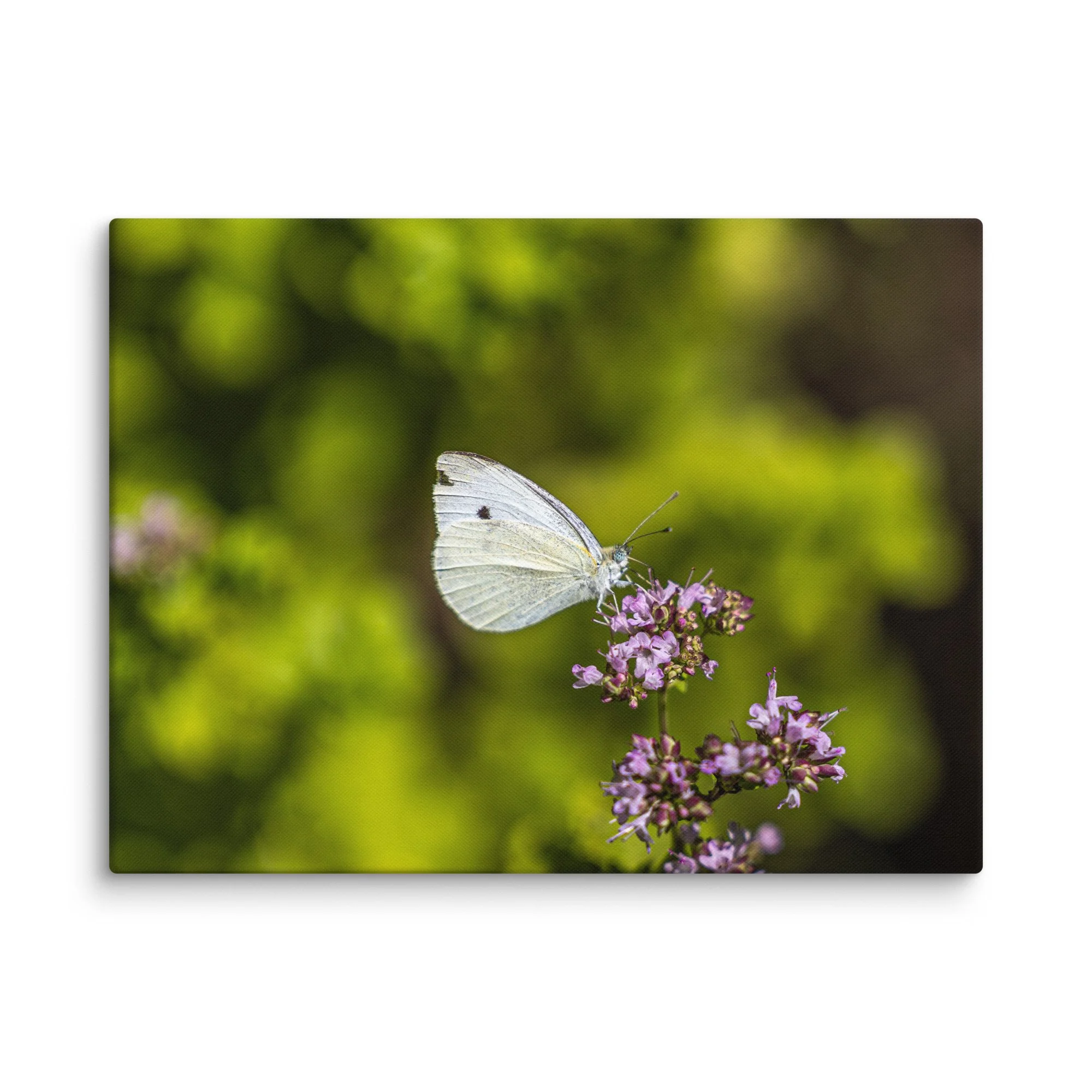 Image 1 of 4
Image 1 of 4

 Image 2 of 4
Image 2 of 4

 Image 3 of 4
Image 3 of 4

 Image 4 of 4
Image 4 of 4





Canvas - Cabbage White Butterfly
from $40.00
The Cabbage White butterfly (Pieris rapae), an abundant species native to Europe and Asia, is now found across much of the globe and is widely known as a significant agricultural pest. The adult butterfly is a medium-sized white insect with a wingspan of about 45−50 mm; the males typically have one black spot on each forewing, while the females have two, and both sexes have black tips on their forewings. Its life cycle begins when the female lays single, pale yellow, bullet-shaped eggs on the underside of host plants, which are predominantly members of the mustard family (Brassicaceae), including cultivated vegetables like cabbage, broccoli, and cauliflower. The eggs hatch into larvae, commonly called imported cabbageworms, which are velvety-green caterpillars with faint yellow stripes, notorious for their voracious feeding that can quickly cause extensive damage to crops. After two to three weeks of growth, the larvae pupate in a chrysalis, which is the overwintering stage, before emerging as adults, with the entire development from egg to adult taking about three to six weeks, often resulting in multiple generations per year.
Size:
The Cabbage White butterfly (Pieris rapae), an abundant species native to Europe and Asia, is now found across much of the globe and is widely known as a significant agricultural pest. The adult butterfly is a medium-sized white insect with a wingspan of about 45−50 mm; the males typically have one black spot on each forewing, while the females have two, and both sexes have black tips on their forewings. Its life cycle begins when the female lays single, pale yellow, bullet-shaped eggs on the underside of host plants, which are predominantly members of the mustard family (Brassicaceae), including cultivated vegetables like cabbage, broccoli, and cauliflower. The eggs hatch into larvae, commonly called imported cabbageworms, which are velvety-green caterpillars with faint yellow stripes, notorious for their voracious feeding that can quickly cause extensive damage to crops. After two to three weeks of growth, the larvae pupate in a chrysalis, which is the overwintering stage, before emerging as adults, with the entire development from egg to adult taking about three to six weeks, often resulting in multiple generations per year.
